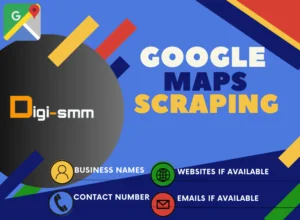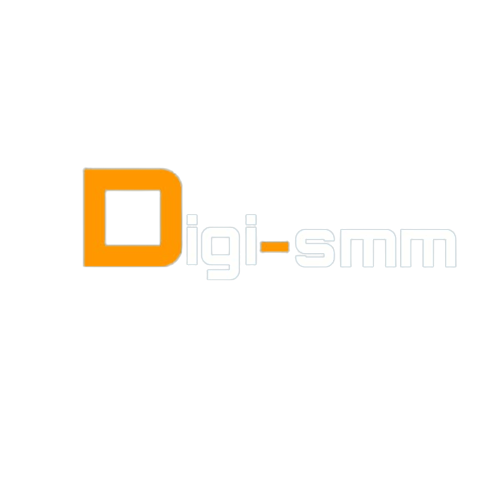"Unlock Success with Powerful Data Mining Tools"
Data Mining provides diverse data from top platforms like Google, Google Maps, Yellow Pages, WhatsApp, Instagram, Facebook, and more.
SERVICES3
Data Mining for Businesses
B2B LEADS, GOOGLE MAP SCRAPE BUSINESSES DATA
Welcome to the right place for getting Business leads from Google Maps, Data Mining.
I can provide you leads on your Keywords/categories from Google Maps, of a specific niche and location.
You will get a detailed list of businesses scraped from Google map data, including:
Business Name > Address > Contact No > Website > (Emails if available) > Ratings & Reviews...


1. Uncover Opportunities with Business Data Mining
Harness the Power of Information for Growth
In this section, we delve into how our cutting-edge data mining tool empowers you to scrape businesses’ valuable data. Unlock hidden opportunities and stay ahead of the competition by leveraging the extensive information at your fingertips. From contact details to market trends, discover the key insights that can drive your business success.
Are you tired of manual data collection? Our tool automates the process, saving you time and effort. Embrace the future of business intelligence and make informed decisions with ease. Don’t miss out on opportunities – be the first to know, strategize effectively, and elevate your business to new heights.
2. Precision and Efficiency: Scrape Businesses Seamlessly
Streamline Your Workflow with Advanced Data Scraping
Experience the unmatched efficiency of our data scraping solution. Tailored for businesses of all sizes, this tool ensures precision and reliability in extracting information. Say goodbye to tedious manual processes and hello to a seamless, automated experience.
Our advanced algorithms guarantee accuracy, providing you with clean and organized data ready for analysis. Whether you’re a small startup or an established enterprise, optimize your workflow, reduce errors, and make data-driven decisions effortlessly. Elevate your productivity and focus on what truly matters – growing your business.
3. Transform Your Strategy with Actionable Insights
Empower Your Decision-Making with In-Depth Analysis
It’s not just about data; it’s about insights. This section emphasizes how our product goes beyond mere information gathering, offering actionable insights that transform your business strategy. Leverage the power of analytics to identify trends, understand customer behavior, and make decisions that impact your bottom line positively.
Our tool provides comprehensive reports and visualizations, making complex data easy to understand. Stay ahead of market shifts, identify emerging opportunities, and refine your approach with confidence. Transform the way you do business – embrace the future with our business data mining solution.
THE DIFFERENCES BETWEEN DATA SCRAPING AND DATA MINING
Data Scraping
Process
Data scraping involves using automated tools or scripts to extract data from websites and online sources. The process typically includes the following steps:
1. Identify the Target: Determine the websites or online sources from which you want to extract data.
2. Inspect Source Code: Analyze the HTML structure of the web pages to understand the layout and organization of the data you want to scrape.
3. Select Data Elements: Identify the specific data elements (text, images, tables, etc.) that you want to scrape from the web pages.
4. Develop Scraping Script: Create a scraping script or use a scraping tool that simulates a web browser’s behavior to navigate through the pages, locate the desired data, and extract it.
5. Retrieve Data: Run the scraping script to fetch the targeted data from the web pages and save it in a structured format, such as CSV, JSON, or a database.
Techniques
Data scraping techniques can range from simple to complex, depending on the complexity of the website’s structure and the data you’re trying to extract. Techniques include:
HTML Parsing: Extract data by parsing the HTML structure of web pages using libraries like BeautifulSoup (Python) or jsoup (Java).
XPath or CSS Selectors: Use XPath expressions or CSS selectors to locate specific elements within the HTML structure.
Web Scraping Tools: Utilize dedicated web scraping tools like Scrapy, Selenium, or Puppeteer, which provide more advanced features for interacting with dynamic websites.
Applications
Data scraping finds applications in various fields:
Market Research: Collect pricing information, product details, and reviews from e-commerce websites for competitive analysis.
Content Aggregation: Gather news articles, blog posts, and other content for content curation platforms.
Social Media Analysis: Extract data from social media platforms to monitor trends, sentiments, and user engagement.
Real Estate Listings: Scrape real estate websites to gather property listings and prices.
Job Postings: Collect job postings from job boards for analysis or aggregation.
Data Mining
Process
Data mining is a more complex process that involves analyzing large datasets to discover hidden patterns, relationships, and insights. The process generally includes the following steps:
1. Data Collection: Gather relevant and comprehensive data from various sources, including databases, data warehouses, text documents, sensor data, and more.
2. Data Cleaning: Prepare the data by cleaning, transforming, and structuring it to ensure it’s suitable for analysis. This step involves handling missing values, duplicates, and inconsistencies.
3. Exploratory Data Analysis (EDA): Perform initial exploration of the data to understand its characteristics, distributions, and potential relationships between variables.
4. Feature Selection/Engineering: Select relevant features (variables) for analysis or create new features that might enhance the predictive power of models.
5. Modeling: Apply statistical and machine learning algorithms to the data to identify patterns and relationships. This could involve techniques like clustering, classification, regression, and association rule mining.
6. Evaluation: Evaluate the models’ performance and the quality of discovered patterns. This might involve techniques such as cross-validation.
7. Interpretation: Interpret the results, extract insights, and draw conclusions from the patterns and relationships discovered.
Techniques
Data mining employs a wide range of techniques, including:
Clustering: Group similar data points together to identify natural clusters in the data.
Classification: Build models that can classify data into predefined categories or classes based on features.
Regression: Predict numerical values based on input features.
Association Rule Mining: Discover relationships between variables, often used in market basket analysis.
Time Series Analysis: Analyze data that changes over time to identify trends, seasonality, and anomalies.
Text Mining: Extract insights from textual data, including sentiment analysis and topic modeling.
Applications
Data mining has diverse applications:
Business Intelligence: Extract insights from sales, customer, and market data to support strategic decision-making.
Healthcare: Analyze patient data to identify trends, predict disease outcomes, and personalize treatments.
Finance: Detect fraudulent transactions, predict stock market trends, and assess credit risk.
Marketing: Segment customers, predict customer behavior, and optimize marketing campaigns.
Manufacturing: Monitor equipment performance, predict maintenance needs, and optimize production processes.
Finally, data scraping and data mining serve distinct purposes within the data ecosystem. Data scraping focuses on extracting specific information from websites, while data mining involves analyzing large datasets to uncover hidden patterns and insights. Both techniques are valuable tools in modern data-driven applications, each contributing to different stages of the data analysis pipeline


